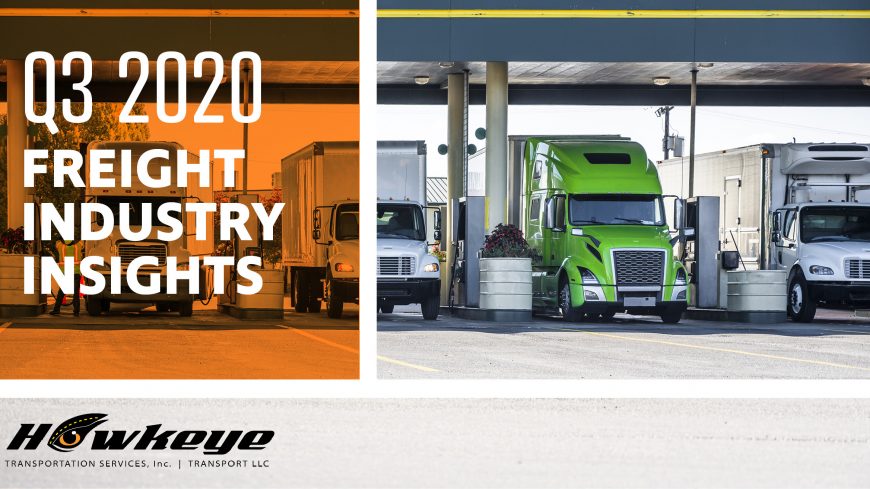Recovery Wavers due to COVID-19 Resurgence
Just as quickly as the U.S. economy slowly recovered, some areas are now slipping back due to rising cases of COVID-19 infections. This is expectedly affecting the freight economy recovery as well. Some regions were forced to slow down reopening plans and consider more lockdowns, others are seeing more economic activity return this quarter.
Amid the COVID resurgence, several Fed districts reported ongoing pay cuts, reduced hours, and unpaid leave for employees. As such circumstances are combined with the current high unemployment rate, businesses are uncertain of the future and are afraid that this will continue to dampen consumer demand.
“Early indicators are showing how fast the economy was snapping back. But the number of cases that we are seeing with COVID-19 going up is very concerning to me, and I think that is a real threat to this recovery,” says Bob Costello, chief economist at American Trucking Associations.[2] “The biggest threat to this recovery is that this pandemic gets worse.” Truck tonnage in July declined a seasonally adjusted 8.3% when compared with year-ago levels, and on a monthly basis was down 5.1% from June, American Trucking Associations reported Aug. 18. The 8.3% drop is the fourth consecutive year-over-year monthly decline.
Economic volatility notwithstanding, most trucking sectors are still swimming with their heads above water. And U.S. trailer orders climbed in July to 19,300, the largest number this year, according to FTR. The gain was up 84% from a year earlier.
Meanwhile, DAT Freight and Analytics[2] reported the online marketplace for spot truckload freight expects demand to return to seasonal trends, causing spot market rates and volumes across all equipment types to increase.
“For instance, there’s been an early increase in demand for pressure-treated lumber as people tackle home improvement projects.” Says Ken Adamo, chief of analytics at DAT. “But produce growers and distributors are contending with soft restaurant demand as states reopen at different speeds with different rules.”
Did you know that the nation’s 3.5 million truck drivers move more than two-thirds of all goods, like food, household goods, and medical equipment in the US? [3] Of those movements, the volume of long-haul trips has dropped by about one-third during the pandemic, while trips of less than 100 miles more than doubled, according to the American Transportation Research Institute (ATRI).
According to James Tompkins, Ph.D. [3], and founder and chairman of Tompkins International, a supply chain consultancy, the pandemic has “created a new awareness of the volatility and uncertainty of the supply chain requirements.”
“Rather than a return to an old normal or even a new normal, supply chains will move to the next normal.” Tompkins adds, “the most important element for the supply chains of the future will be optionality—the ability to pivot from one option to the next to address changing market and customer demands. That will require agility, flexibility, and visibility.”
Many logistics organizations, large and small, have already been moving to digital supply chains. Now more than ever, there is a palpable sense of urgency to get smart systems in place.
Is Your Supply Chain Cyber-Secure?[4]
You may think your company is well protected when it comes to cybersecurity, but there is one commonly overlooked source of vulnerability… your supply chain. You are only as strong as your weakest link, so you must think beyond your internal network. The only way to reduce your risk of a cyberattack is to be fully acquainted with the security procedures of your vendors, partners, and contractors.
Up to 80% of all security breaches start in the supply chain. Alarmingly, 61% of US companies say they’ve experienced a data breach caused by one of their vendors, according to an Opus and Ponemon Institute survey.
Fortunately, there are steps you can take to prevent these attacks…
- Assess and vet your internal and external business partners
- Conduct a thorough background check and look for red flags when hiring a new contractor or forming a new partnership
- Add language in contracts about cybersecurity to ensure their supply chain’s cyber security standards are up to par
- Enforce reasonable standards of security, if partners can’t meet these standards, then there is not a viable partnership
- Use third-party audits to help make sure your partners and vendors are compliant
- Track and maintain an inventory of companies and individuals that access different types of sensitive data your company requires, there may be certain parties that can view data they don’t need for their roles
Prepared as you may very well be, in the event that you or a supply chain partner may yet suffer a cyberattack, immediate response is very important. You should have a company-wide and partner known response plan in place to make sure you are on the same page as every link in your supply chain.
Now is the time to proactively address any cyber security issues with your supply chain before it’s too late. Many people may not realize at first, but the effects of a cyber security breach, identity theft, and fraud go beyond the obvious financial ones. Read Identity Theft Troubles in Logistics: How to Safeguard Your Company from Fraud to learn how to help safeguard yourself and your company against fraudulent activity.
You can rest a little easier when you work with Hawkeye. We take pride in being a legitimate and licensed broker with strong controls in place for vetting carriers, ensuring their legitimacy, and protecting cargo security. When you work with Hawkeye, you have a company working for you as your advocate.
We are dedicated to staying cognizant and informing our customers and carriers of important and up-to-date industry news. CONTACT US to learn more about how we can help you grow your business and stay cyber safe.



